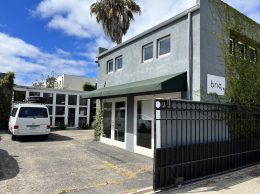Op/ed: The nexus of poverty, education and economic development
IN THIS ARTICLE
- Op/Eds Topic
- Guest commentary Author
By Guest commentary Friday, June 20th, 2014
By Kevin Walthers
Last fall, Santa Barbara County commissioned a report to identify the impacts of the Great Recession on the county. The resulting report, “A Snapshot of Poverty,” provided an eye-opening look at the biggest issue facing our county: poverty and the barriers to economic mobility. The report is particularly sobering for those of us serving the northern half of the county.
The report breaks economic factors into three regional study areas: south, mid and north county. A look at the map detail shows that a combination of mid and north counties comprises the Allan Hancock Joint Community College District (essentially from Solvang and Santa Ynez to the San Luis county line).
The data reveal what most of those living in the county understand intuitively – the mid and north counties are more diverse and less affluent than the southern part of the county, while the unemployment rate is higher and median wages and home values are substantially lower.
The wage picture paints a stark difference in the economic fortunes of south Santa Barbara County residents compared to those in the mid and north regions. While the average wage in the southern part of the county rose slightly during the first decade of this century (up $1,300 annually), the average wage in the mid and north portions of the county actually receded from 2000 levels (a loss of $2,000 and $1,000, respectively). Wages in the southern part of the county are more than 30 percent higher than those in the northern part of the county. This disparity becomes even more significant when factoring in that 65 percent of children in the county live in the areas with the lowest wages.
“A Snapshot of Poverty” details the reality of children in the Allan Hancock College service area. Almost three-quarters of all Santa Barbara children living in poverty live in our community college district. Moreover, if the data-reporting anomaly of students living in Isla Vista is considered, Lompoc and Santa Maria account for 85 percent of all county residents living in high-poverty areas.
A key mission of Allan Hancock College is to build the economic vitality of our community. We do this by providing students with training that leads to employment in areas that pay above average salaries. We are educating future nurses, policemen, firemen, welders, auto technicians and machinists who will leave the college and find jobs in our region. A visit to any manufacturer, hospital or public safety agency in our area finds AHC graduates throughout the organization.
At AHC, we are doing more than helping people overcome incredibly difficult odds — we are changing the odds for residents of northern Santa Barbara County. Last month, we awarded degrees to more than 850 students and another 1,000 earned certificates. Still, this is only the first step toward tackling our persistent poverty issue.
Persistent poverty can only be addressed by building a system that allows for economic mobility. According to the UCSB Economic Forecast Project, job growth in Santa Barbara County through 2020 will be dominated by low-wage jobs such as farm laborers, personal care aides and the service industry. Of the 10 fastest-growing jobs for the next six years, only one — a registered nurse — pays more than the median county salary, while four of the top 10 barely register at half of the median salary.
If, as suggested by “A Snapshot of Poverty,” the north county must take steps to attract “large numbers of jobs with family-sustaining wages, mobility and decent benefits,” then there is a real need to ensure that there is a diverse industry base for well-trained residents.
The multiplier effect created by high-wage jobs sustains a robust economy, reducing the need for social services and building the tax base that funds our educational system. If we are serious about changing the odds for the impoverished children of northern Santa Barbara County, we must invest in a strong economic infrastructure that is underpinned by industry and manufacturing jobs.
• Kevin Walthers is the superintendent and president of Allan Hancock College, a community college in Santa Maria.
Related Articles
 Friday, September 16th, 2022
Friday, September 16th, 2022









